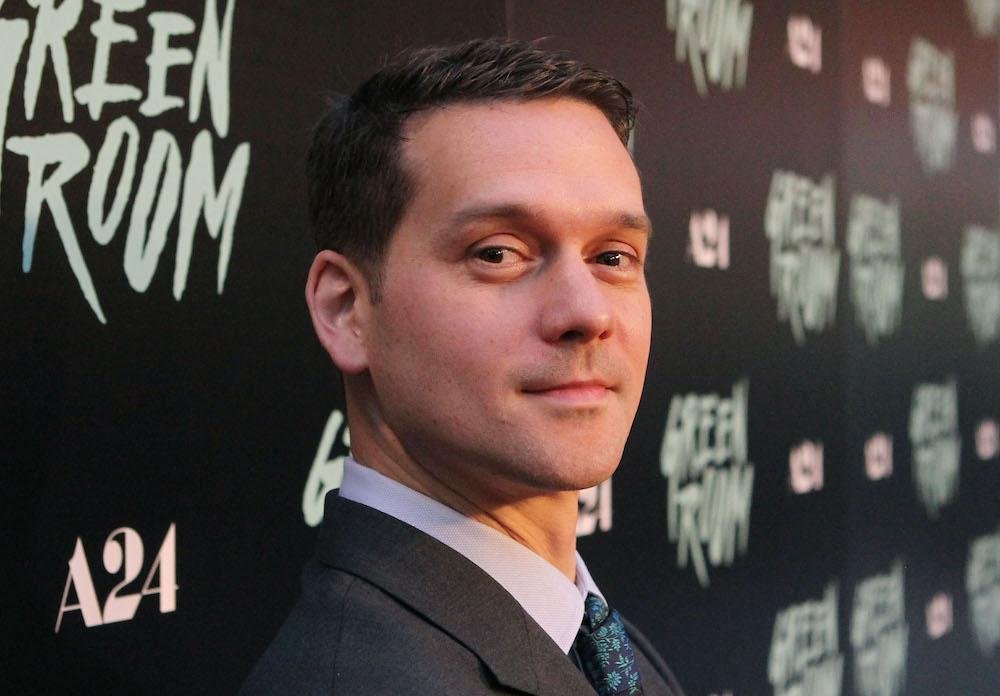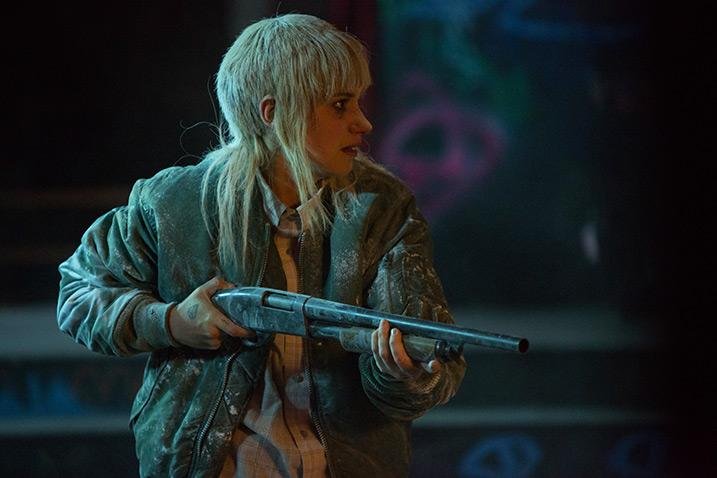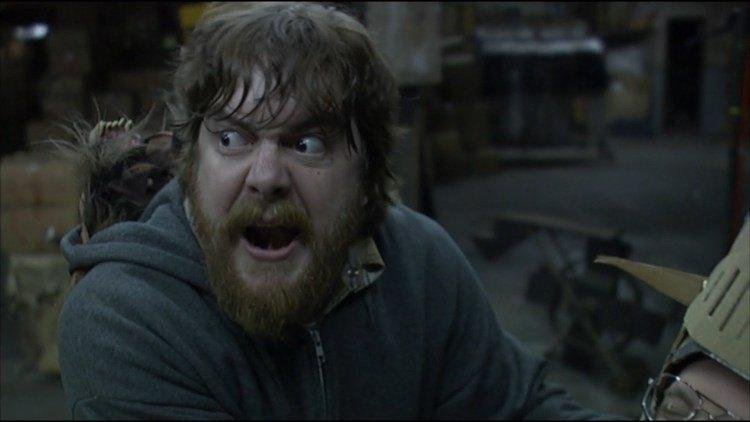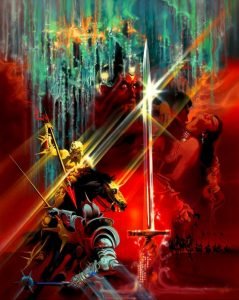Exploring the dark and violent world of Jeremy Saulnier’s cinema
Welcome to my latest article, where we’ll be delving into the dark and violent world of one of the most talented filmmakers of recent years – Jeremy Saulnier. Known for his gritty and intense films, Saulnier is a true master of cinema violence. From his debut feature “Murder Party” to his critically acclaimed films “Blue Ruin” and “Green Room,” Saulnier has captivated audiences with his unique vision and uncompromising approach to storytelling. Join me as we explore the themes, motifs and techniques that make Jeremy Saulnier’s cinema a force to be reckoned with.
Welcome to my latest article, where we’ll be delving into the dark and violent world of one of the most talented filmmakers of recent years – Jeremy Saulnier. Known for his gritty and intense films, Saulnier is a true master of cinema violence. From his debut feature “Murder Party” to his critically acclaimed films “Blue Ruin” and “Green Room,” Saulnier has captivated audiences with his unique vision and uncompromising approach to storytelling. Join me as we explore the themes, motifs and techniques that make Jeremy Saulnier’s cinema a force to be reckoned with.

Introduction to Jeremy Saulnier’s work
Jeremy Saulnier is an independent film director known for his unique style of cinema violence. His work often features intense and brutal scenes that leave a lasting impact on the audience. Saulnier gained widespread acclaim for his thriller film “Blue Ruin” which showcased his ability to blend suspense and drama. He followed it up with “Green Room” which featured a group of punk rockers trapped in a neo-Nazi skinhead compound. Saulnier’s work is often characterized by its attention to detail, complex characters and unexpected plot twists. His films are not for the faint-hearted but are must-watch for fans of the thriller genre.
The role of violence in Saulnier’s films
The role of violence in Jeremy Saulnier’s films is unique and prominent. Saulnier’s approach to violence is not gratuitous, but rather it serves as an integral part of his storytelling. He uses violence to create tension, to explore human nature, and to drive the plot forward. Saulnier’s films often feature sudden bursts of violence that are shocking and visceral, making them stand out from other films in the genre. Through his use of violence, Saulnier explores themes of revenge, justice, and morality, creating complex and thought-provoking films. Despite the often graphic nature of the violence in his movies, Saulnier’s films are not merely exploitative but rather serve a deeper purpose in his storytelling.
Saulnier’s unique approach to cinematic violence
Jeremy Saulnier is known for his unique approach to cinematic violence, which sets him apart from many other filmmakers. Unlike the gratuitous violence often found in action movies, Saulnier’s violence is purposeful and grounded in reality. He uses violence to explore the consequences of actions and the impact they have on individuals and communities. Saulnier’s use of violence is always intentional, never gratuitous or flashy. This approach adds a layer of depth and realism to his films, making them not just thrilling, but meaningful as well.

The visual language of violence in Saulnier’s films
Jeremy Saulnier has proven to be a master of portraying violence in his films through his effective use of visual language. From the bloodbath in Blue Ruin to the intense shootout in Green Room, Saulnier’s violence is never gratuitous, but rather a necessary component of his storytelling. His signature use of color, lighting, and camera angles create a palpable sense of tension that draws the audience in and keeps them on the edge of their seats. In Saulnier’s films, violence is not just a means to an end, but an integral part of the narrative that adds weight and meaning to each scene.
The impact of violence on character development
The impact of violence on character development is a common theme in many movies, and Jeremy Saulnier‘s films are no exception. Through his use of graphic violence, Saulnier portrays the effects of trauma and violence on his characters’ psyche. In films like “Blue Ruin” and “Green Room,” we see the protagonist’s descent into violence, which ultimately shapes their character development. The violence in Saulnier’s films is not gratuitous but rather a tool to explore the human condition and the limits of human endurance. Saulnier’s films remind us that violence not only affects the body but also the mind and soul, leaving an indelible mark on a character’s development.
The role of sound in Saulnier’s depictions of violence
Jeremy Saulnier is a master at portraying violence in his films, and one of his key tools in doing so is his use of sound. In films like “Blue Ruin” and “Green Room,” Saulnier uses sound to amplify the brutality of violent scenes, making them all the more visceral and jarring for the viewer. From the sound of a gunshot ringing out to the sickening crunch of bones breaking, every sound is carefully crafted to create a sense of unease and tension. By using a combination of diegetic and non-diegetic sound, Saulnier creates a soundscape that draws the audience in and immerses them in the violence unfolding on screen. It’s a testament to his skill as a filmmaker that he can use sound to create such a powerful emotional impact.

The social commentary in Saulnier’s violent scenes
Jeremy Saulnier is a master of cinema violence, and his films contain more than just brutal action sequences. The violent scenes in his movies, such as Blue Ruin and Green Room, serve as a commentary on society and its flaws. For example, Green Room depicts a group of punk rockers fighting against a group of neo-Nazis in a tense and graphic showdown. Through this scene, Saulnier comments on the rise of hate groups and the dangers of extremism in our society. His violent scenes are not just for shock value, but they also serve a purpose in the narrative and make a powerful statement.
The controversy surrounding Saulnier’s violence
The controversy surrounding Jeremy Saulnier’s use of violence in cinema has been a topic of debate among film critics and audiences alike. While some argue that his gritty and realistic portrayals of violence add to the authenticity of his films, others claim that it is excessive and unnecessary. Saulnier himself has defended his approach, stating that he aims to show the consequences and impact of violence rather than simply using it for shock value. Regardless of one’s stance on the matter, there is no denying that Saulnier’s films, such as “Blue Ruin” and “Green Room”, leave a lasting impression on viewers.
The critical response to Saulnier’s portrayal of violence
The critical response to Jeremy Saulnier’s portrayal of violence in his films has been mixed. While some critics praise his ability to depict violence in a realistic and impactful manner, others criticize the excessive use of gore and brutality. Saulnier’s approach to violence is often described as unflinching, and his willingness to show the full consequences of violent acts is both lauded and criticized. Despite this, his films continue to draw in audiences and spark discussions about the role of violence in cinema.
Conclusion
In conclusion, Jeremy Saulnier‘s approach to violence in his films is not for the faint of heart. His depictions of violence are raw, realistic, and often brutal. However, his films are more than just gratuitous violence; they explore themes of vengeance, justice, and morality. Saulnier’s unique perspective and attention to detail make his films stand out in the genre. Whether you’re a fan of violent cinema or not, there is no denying the impact that Jeremy Saulnier’s films have on the viewer.
For more information about Jeremy Saulnier cinema violence, including movie details, cast information, etc..
check out the filmaffinity page.



